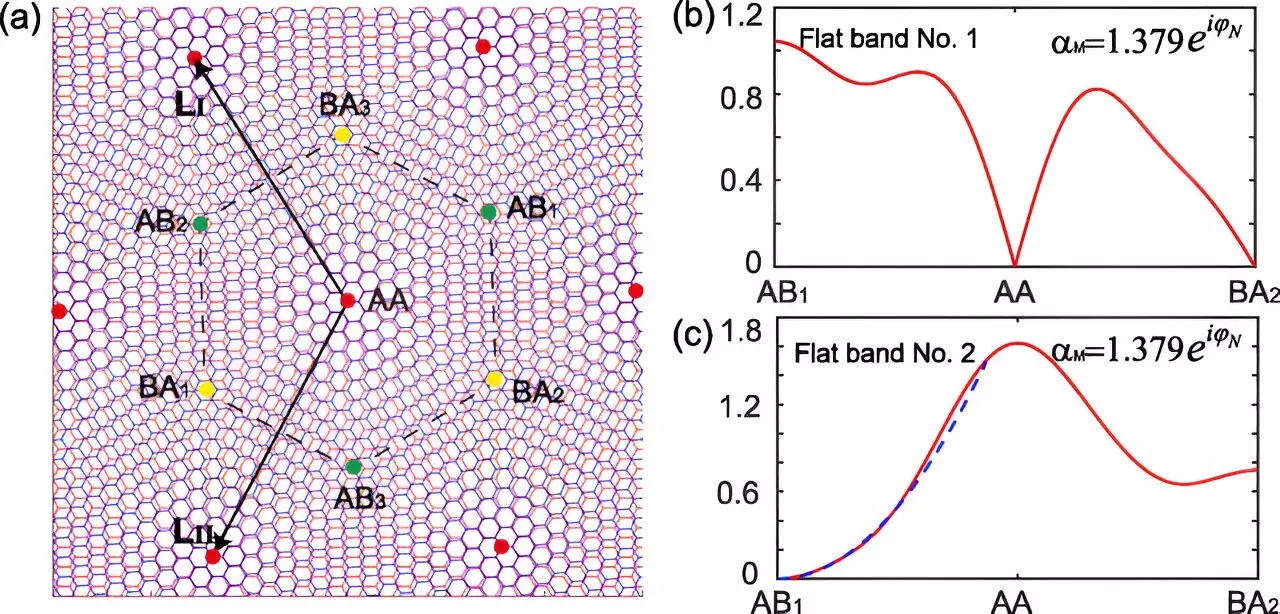Graphene, a single layer of carbon atoms in a hexagonal lattice, has been the subject of extensive research due to its exotic properties. However, when two or more layers of graphene are combined and twisted at specific angles, a new realm of possibilities opens up for exploring exotic physics.
Researchers at RIKEN have demonstrated that by introducing a spatially varying magnetic field to twisted bilayer graphene, it is possible to engineer flat bands, leading to even more enriched phenomena. This discovery has the potential to pave the way for groundbreaking advancements in the field of condensed matter physics.
In twisted bilayer graphene, at certain twist angles, the band structure evolves into flat bands due to the adjustment of interlayer coupling. These flat bands minimize the kinetic energy of electrons, making electron-electron interactions the dominant force. This phenomenon can give rise to unconventional superconductivity and other correlated electronic phenomena.
Emergence of Quadruply Degenerate Bands
The researchers have mathematically shown that the introduction of a spatially alternating magnetic field can lead to the emergence of additional magic angles and flat bands that are quadruply degenerate. This higher degeneracy opens up the possibility of exploring even more correlated phenomena, offering a novel degree of freedom to tailor the electronic band structure.
The discovery of these unique properties in twisted bilayer graphene has both surprised and excited the physics community. The search is now on to identify other materials that exhibit similar flat bands and correlated electronic phenomena. Researchers are optimistic about the potential for finding new platforms that can host flat bands and further expand our understanding of exotic physics.
The impact of magnetic fields on twisted graphene layers is a promising avenue for exploring exotic physics and uncovering novel electronic phenomena. The discovery of flat bands and quadruply degenerate states in twisted bilayer graphene has sparked a wave of excitement in the scientific community, propelling researchers to delve deeper into the possibilities offered by this intriguing material.


Leave a Reply